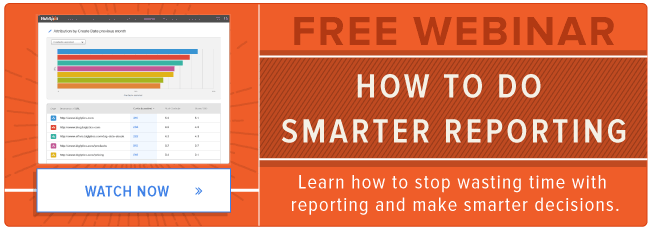
In life, many people believe that more = better. More traffic, visitors, and customers? Yep, that’s better. More time in your day to do the things you love? That’s better. More collaboration between Sales and Marketing? That’s definitely better.
But in many areas of marketing, more doesn’t always mean better. Take your marketing data, for example. Though having data about your marketing programs is crucial to analyzing your success and making changes to future programs, some individual metrics aren’t actually that helpful. And with only so much time in your day, you can’t afford to spend your time analyzing data that won’t help you make better marketing decisions.
If you want to get a full run-down on the metrics you should (and shouldn’t be tracking, tune into our webinar on March 11 called Smart Reporting: How to Stop Wasting Time and Make Better Marketing Decisions. To register for that webinar, click here.
In the meantime, let’s take a look at some of the metrics you might not want to track — and give you suggestions for different metrics to look at instead.
1) Email Opens
When you first hear about it, open rate seems like a great metric to track — it’s the percentage of people opening your emails. You assume it’ll give you an understanding of how many people are interested enough in your emails that they open them.
But open rate can be a misleading metric. It can vary based upon the email client that someone is using to open his or her email. This is because an “open” is counted when the images load in the recipient’s email. But what if someone doesn’t allow images to load by default? And what if someone gets the text-based version of your email? Those folks won’t get counted in your overall open rate.
So instead of looking at your open rate, look at the clickthrough rate. This metric will allow you to see not just how many people are opening and clicking on your email. That will help you better understand how many people are interested enough in your content that they want to engage with your company further.
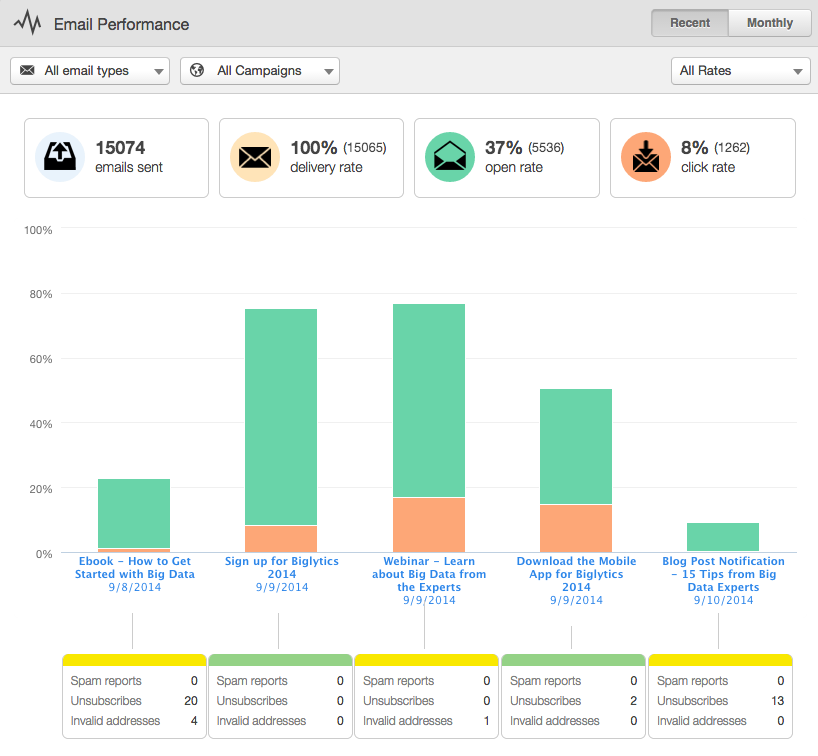
2) Facebook Likes
A Like on Facebook can be exciting. It shows that your audience is interested in your content and likes (no pun intended) what they see — plus, having more Likes on your post means it could be shown more often in the News Feed. But just because someone Likes your post doesn’t mean they’re actually clicking through to your website — which, you know, is a top reason why you’re on Facebook in the first place.
When you create your next Facebook post, think about how your post could drive clickthroughs. Are there certain words or images you could use to inspire people to take action? As great as a Like is to show your content to more followers, it still does not translate into action on your website.

3) Ad Impressions
You may get thousands of impressions from someone seeing your ad — you rack up an impression every time someone “sees” your ad. But counting when something is seen is actually more complicated than it sounds. Some ad programs count an impression every time the page is loaded — regardless of whether the ad was actually viewable. This means that an ad below the fold could be loaded and counted as an impression, even if the user never scrolled down. Or maybe an ad loaded at the top of the page, but because of banner blindness, people might not realize there’s an ad there. Or maybe the user has Adblock on — even though they’re not viewing an ad, they can still rack up impressions for advertisers, too.
Since tracking impressions so unreliable, it’s better to look at the clickthrough rate on your ads — even if you’re not aiming to get conversions on an ad, it’ll give you a much better understanding of how well your ad is doing.
Let’s use a real example to put this in perspective. Let’s say I went to YouTube because I wanted to see Seth Godin’s keynote from INBOUND 2013 (Side note: He’ll be back at INBOUND 2015 this year. Register here to see him). There was an ad on the upper right hand side for Bose. I see it, so that counts as ad one impression from me. However, I didn’t click on it. So even though I saw the ad, is that a valuable metric for them? Not as much as if I had clicked on it.
So look for ways to drive conversions with your ads instead of just getting exposure. If you know that certain placements for your ads drive more conversions than others, that may be the best place to put your ad.
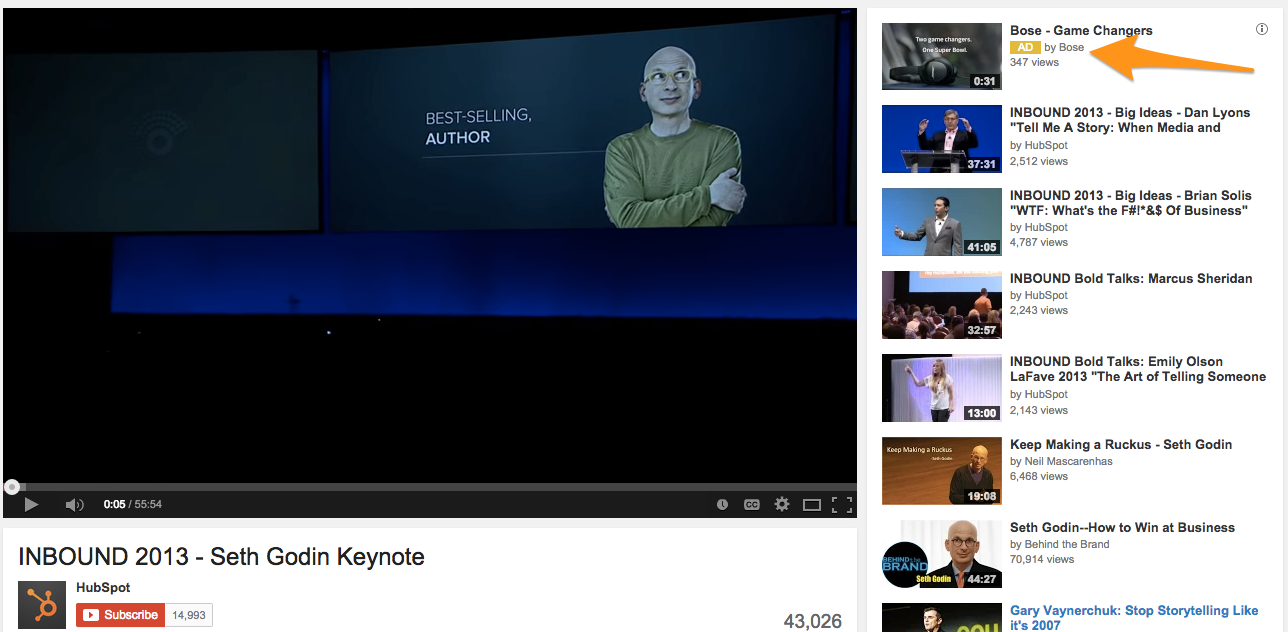
4) Blog Comments
There are many reasons companies blog. We blog to gain authority in our industry. We blog to rank for keywords that are important to our business in search engines. We blog to generate visits to our website. We blog to generate leads for our business. We blog to generate customers.
One metric many companies use to when looking to achieve the above goals is the number of blog comments. Typically it is a good practice to encourage commenting to ask additional questions and continue the conversation in the comments, but you shouldn’t always rely on the volume or quality of the discussion to determine whether that blog post is successful (or not).
Why? Comments don’t always correlate with business-building goals. You could have a blog post that has twenty or thirty comments but generates only a handful of visits. You could also have a blog post that has one comment but generates tons of leads. The number of visits and leads generated from a blog post can give you a much better picture of the health of your blog when it comes to driving bottom-line results.
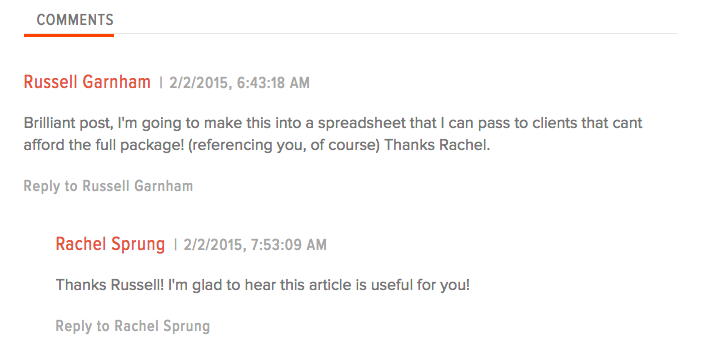
5) Reports on Your Entire Database
Marketers are constantly analyzing the behavior and actions taken by all of the contacts in their database. But often they bucket them together into one group and do the analysis on all of their contacts.
However not all contacts were created equal. Some are from one persona, others are from different industries, and still others are from different locations. By not segmenting based on these characteristics, you are doing yourself a disservice.
Segmenting your contacts based on similar characteristics will ensure you get more accurate information. For example, if someone is the persona Small Business Owner, and someone else is the persona Fortune 500 CEO, they are probably going to respond differently to your different marketing channels. Just because they are leads for your company doesn’t mean your marketing style shouldn’t change. However, by segmenting them into two separate groups and when you do your analysis, you will get more accurate data on what works and what doesn’t for each part of your database.
To find out how to segment your contacts using HubSpot, read this blog post.
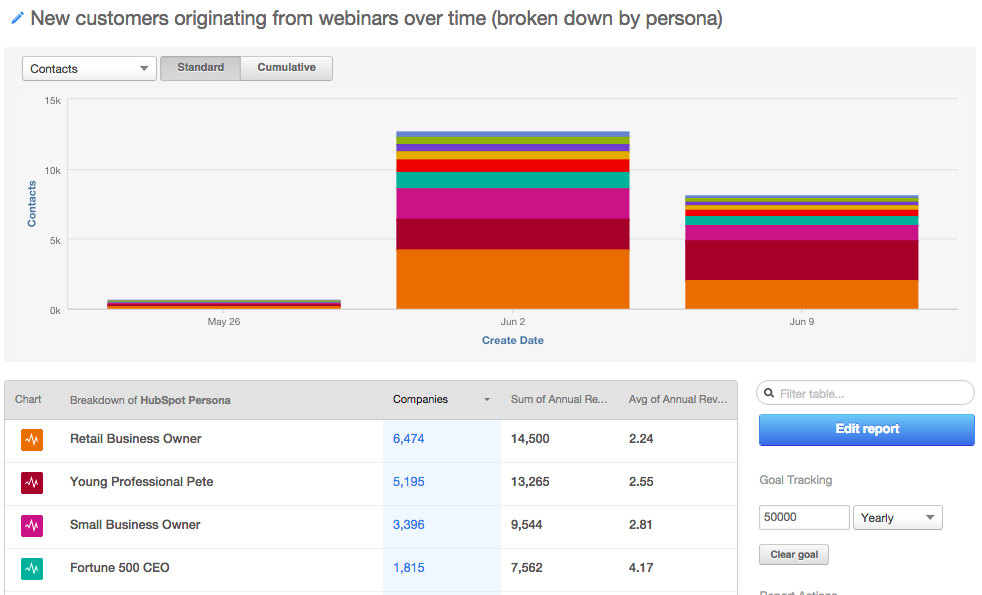
Want to learn how to do smarter reporting? Don’t forget to tune into Smart Reporting: How to Stop Wasting Time and Make Better Marketing Decisions on March 11.
![]()




